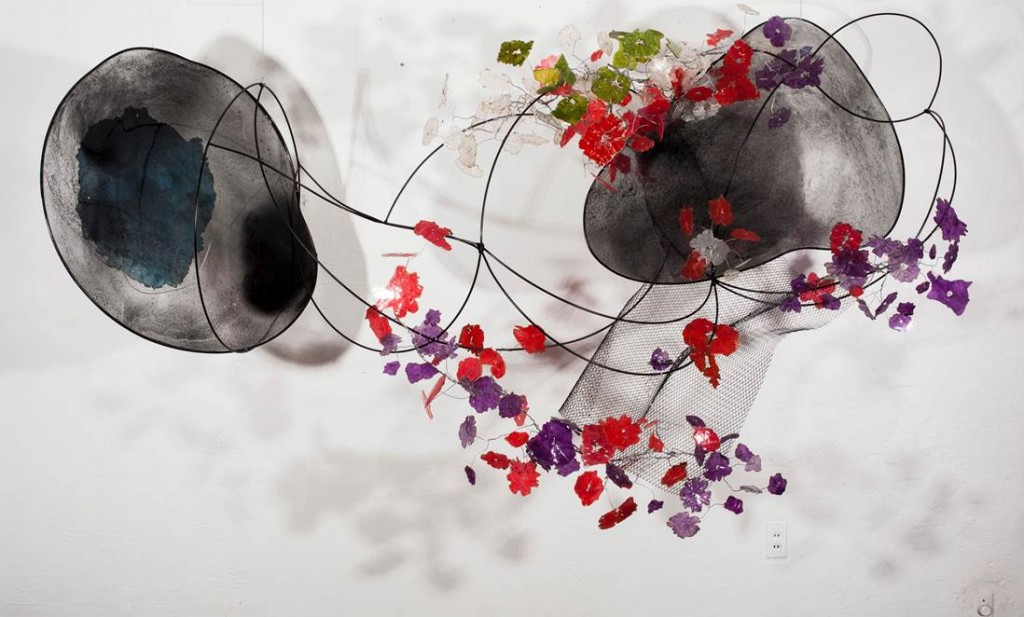
Delicate art of our fragile oceans
The most eye-catching piece in an exhibit filled with quite a few of them, Mira Lehr’s “The Pull of the Tide” at Kelley Roy Gallery, is a huge tapestry covering one wall. As the title refers to, all these new works from the long-established artist relate to the tides, the organisms of the ocean, and our precarious relationship waters as they continue to rise and threaten all waterfronts across the globe.
This particular work, called “Diel Migration,” is made partially from jute hemp, which is used to cover land to keep it from eroding; it looks like very heavy netting. Woven into this is shiny copper, manipulated red Japanese paper that look like sea “flowers” or coral, and bright-colored resin splotches. The total effect resembles that bed of seaweed you stumble upon while walking the beach, which has caught debris from the sea in its web — maybe formerly alive creatures and stuff discarded from a ship. Or maybe a view of plankton rising to the surface — diel are a form of plankton.
Across the room is another stunning piece, this time with subdued coloring, which includes white light bulbs, rust-colored Japanese paper, and video of waves crashing up side down. The paper-covered wood panel is curved to resemble a wave, and hanging within its “frame” are variously sized light bulbs that are used to grow coral. They are off, while tiny bulbs provide the actual lighting. The shadows are remarkable.
“Coriolis.”
In fact shadows play a big part in many of the pieces here, especially the series of colored resin and Japanese-paper works that look like jelly fish; as the light pours through the clear parts of the pieces, it casts shadows of the images against the wall. Jelly fish, by the way, as Lehr points out, have the ability to regenerate and are being studied by scientists for that property. As the oceans encroach on our man-made environment, as we depopulate the seas by over-fishing, here, she suggests by these works, is a ray of hope.
The two major sculptures reference the impact of tides and winds. “Coriolis” is the title of one, which is the term for the effect of winds on weather patterns, especially hurricanes and typhoons. It’s a beautiful work, with two large, gray oval opposing resin pieces tied together with steel mesh on which hang small, colorful bits that resemble flowers being tossed and turned in the wind. The other, “Tidal Equation,” includes a half moon and more swirling motion.
It would be a shame to miss out on an exhibit so relevant to our South Florida world.
“The Pull of the Tide” runs through Nov. 16 at Kelley Roy Gallery, 50 N.E. 29th St., Miami; 305-447-3888; kelleyroygallery.com. Visits are by appointment only.
Recent Content
-
Artsarticle ·
-
Artsarticle ·
-
Artsarticle ·


